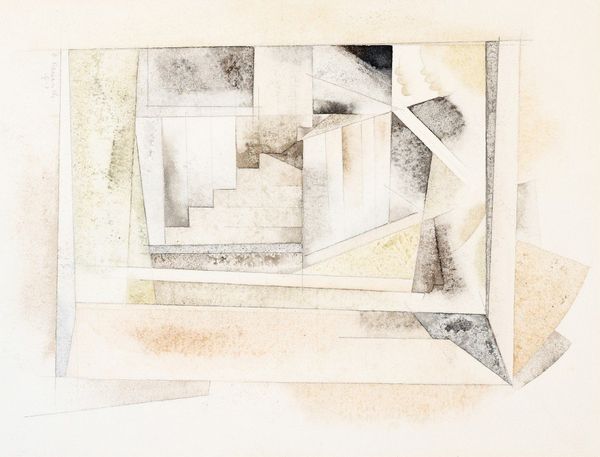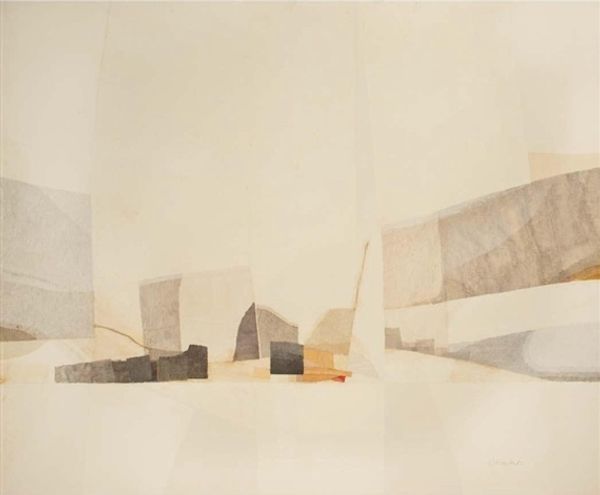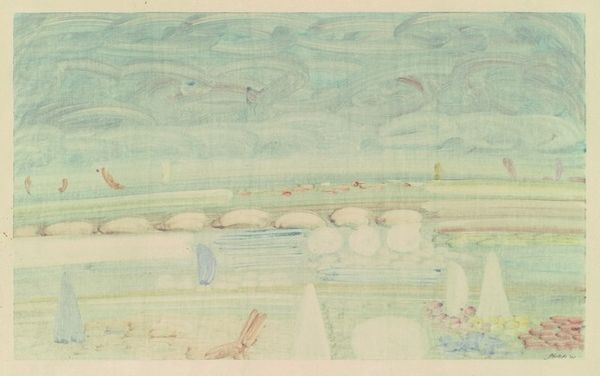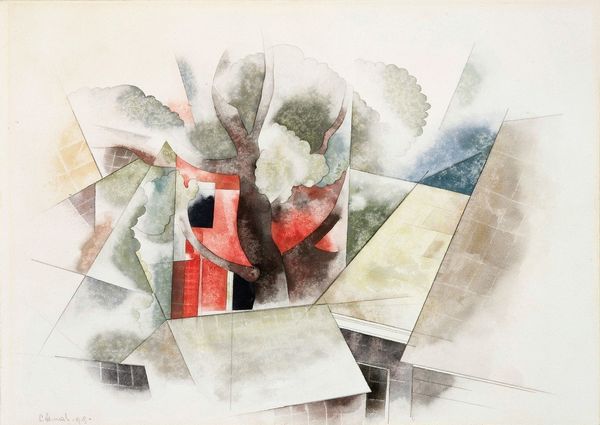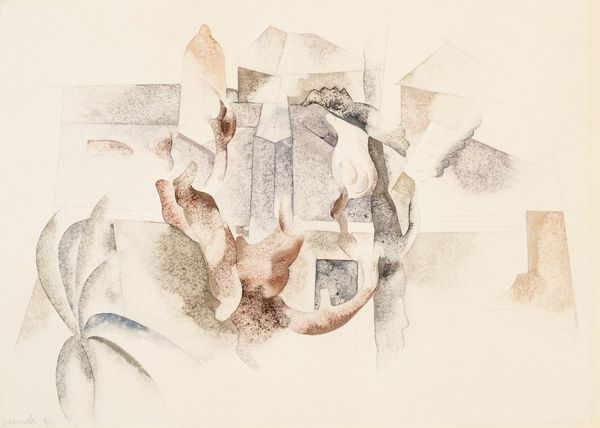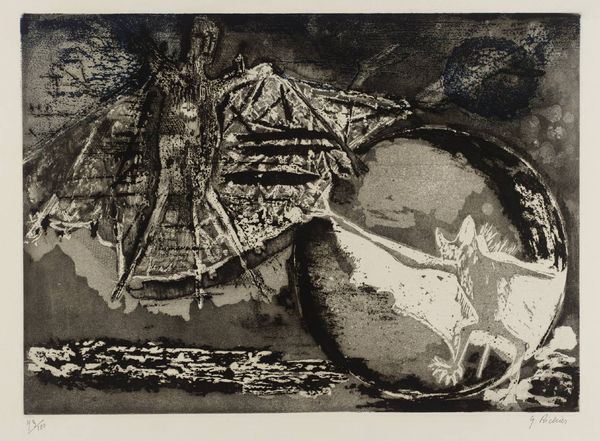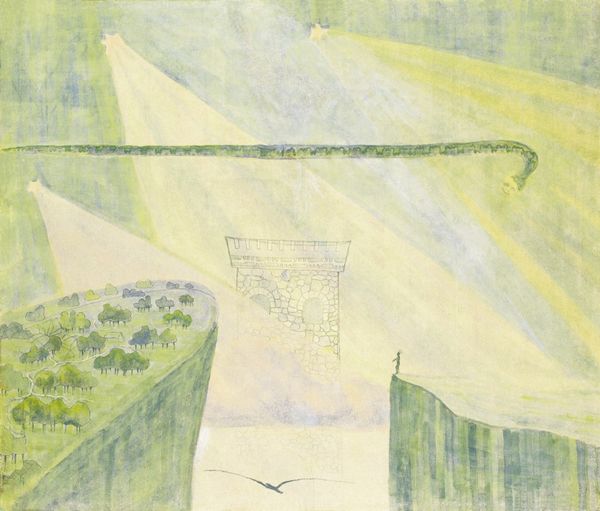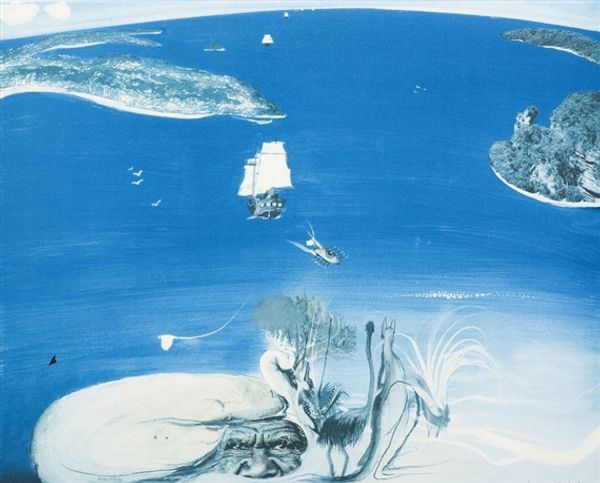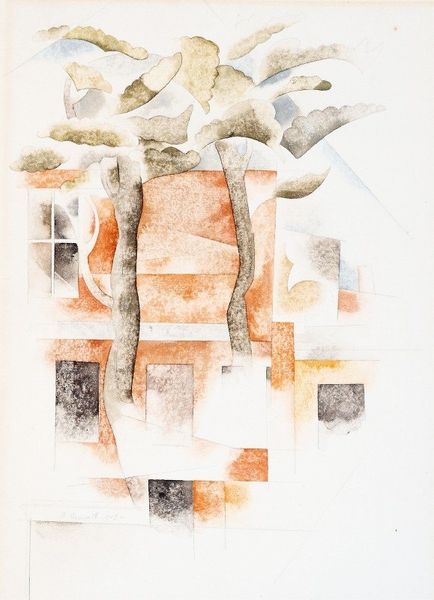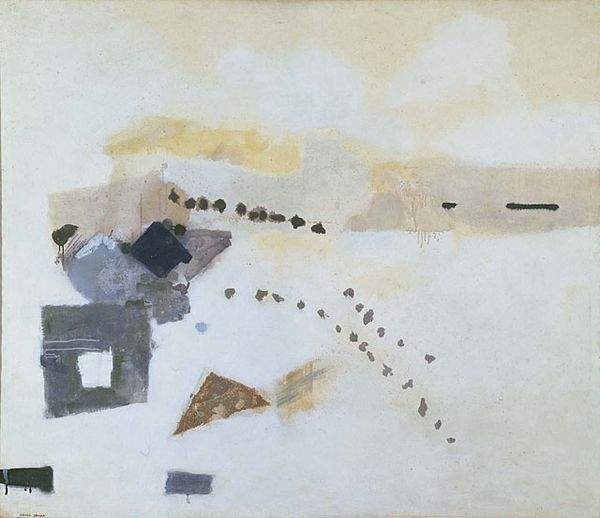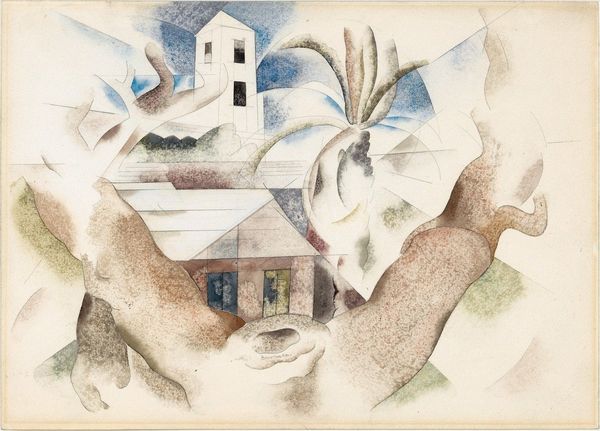
painting, watercolor
#
cubism
#
painting
#
pencil sketch
#
abstract
#
watercolor
#
abstraction
#
line
#
cityscape
#
watercolour illustration
#
modernism
#
watercolor
Copyright: Public Domain: Artvee
Curator: This watercolor, "Bermuda, Masts and Foliage," created by Charles Demuth in 1917, presents a fascinating study in early modern abstraction. Editor: It's ghostly, almost ethereally beautiful, yet fragmented. The interplay of pale blues and browns feels like a half-remembered dream of a seaside town. Curator: The composition is intriguing; Demuth has deconstructed the landscape into geometric forms—cubist inflections—yet the recognizable elements, such as masts and foliage, persist. Notice how he employs line to define space and volume, flattening the perspective in a way that emphasizes surface and pattern. Editor: I'm drawn to the textures; you can see the bleed of the watercolor into the paper, a palpable record of its making. Was he thinking about industrialization and the decline of traditional maritime skills? Bermuda was, and is, heavily dependent on seafaring; the masts suggest industry, human endeavor. The choice of such ephemeral materials suggests a commentary on its transience, though that may be an overreading. Curator: Possibly. It could also be that his selection of watercolor lends itself to dematerialization—forms emerge from and recede into the ground. It sets up an elegant tension between representation and abstraction, which becomes so key to the development of modernism. Semiotically speaking, each geometric plane and tonal shift acts as a signifier, drawing attention to its presence and, therefore, disrupting the signified—in this instance, Bermuda. Editor: Precisely. This challenges our very perception of "cityscape," which we may instinctively try to place this within. For all its initial delicacy, it uses line and watercolor washes as active interventions into a scene; his choices reveal how art functions less as a mirror of the world and more as a kind of engagement with, and reinterpretation of, experience. Curator: An astute observation! This particular artwork demonstrates that art making does involve deconstruction, a conscious rearranging of our perceived reality to elicit introspection from the viewer. Editor: Absolutely, and even to consider how accessible are its materials; Demuth pushes watercolor toward this profound idea. It is this transformation that gives us a glimpse into the processes of thinking and making.
Comments
No comments
Be the first to comment and join the conversation on the ultimate creative platform.
